La Nuit Americaine [Day for Night] (1973)
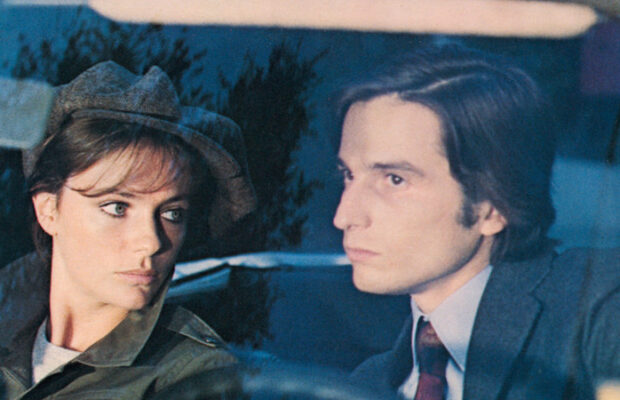
Toronto Film Society presented La Nuit Americaine [Day for Night] (1973) on Monday, August 15, 1983 in a double bill with Lucky Devils as part of the Season 36 Summer Series, Programme 8.
Production Company: Les Films du Carrosse/P.E.C.F. (Paris)/P.I.C. (Rome). Executive Producer: Marcel Berbert. Production Manager: Claude Miller. Director: Francois Truffaut. Assistant Director: Suzanne Schiffman, Jean-Francois/Stevenin. Screenplay: Francois Truffaut, Jean-Louis Richard, Suzanne Schiffman. Photography: Pierre-William Glenn. Colour: Eastman Colour. Music: Georges Delerue. Editor: Yann Dedet, Martine Barraque. Assistant Director: Damien Lanfranchi. Sound recording: Rene Levert, Harrik Maury. Sound re-recording: Antoine Bonfanti.
Cast: Jacqueline Bisset (Julie Baker), Valentina Cortese (Severine), Jean-Pierre Aumont (Alexandre), Jean-Pierre Leaud (Alphonse), Dani (Liliane), Alexandra Stewart (Stacey), Jean Champion (Bertrand), Francois Truffaut (Ferrand), Nike Arrighi (Odile), Nathalie Baye (Joelle), David Markham (Dr. Michael Nelson), Bernard Menez (Bernard), Gaston Joly (Lajoie), Zanaide Rossi (Mme. Lajoie), Christophe Vesque (Boy in Dream), Maurice Seveno (TV Reporter), Henry Graham and Marcel Bebert (Insurance Representatives), Marc Boyle (Subtitles).
Day For Night is Truffaut’s “Celebration of the Cinema.” In a generous, sentimental tribute, Day For Night honours those traditional, studio-bound netlocks of filmmaking, and the type of film that Truffaut has never made.
It is the story of the day-to-day filming of a fictitious scenario called “Meet Pamela” and all of the various troubles that can plague a movie production. At the same time, Day For Night manages to pay homage to other films, directors, and others involved in filmmaking.
The idea for the film came up while Truffaut was shooting Jules And Jim. In one scene, Jeanne Moreau is hovering over two actors and says: “Isn’t there anyone here who’ll scratch my back for me?” At that moment the prop man came into the range of the camera. He was so moved by the reality of the question that he leapt forward, not realizing the line was in the script. Truffaut thought that filming the film of the film would be more amusing and certainly more vital than filming the film.
While working on Two English Girls, Truffaut came across the set for the film, The Mad Woman of Chaillot, which was abandoned by its production company, because the cost of striking it would be too expensive. The set was complete, with building exteriors, a fountain and a subway station. The more he observed it, the more appealing it became.
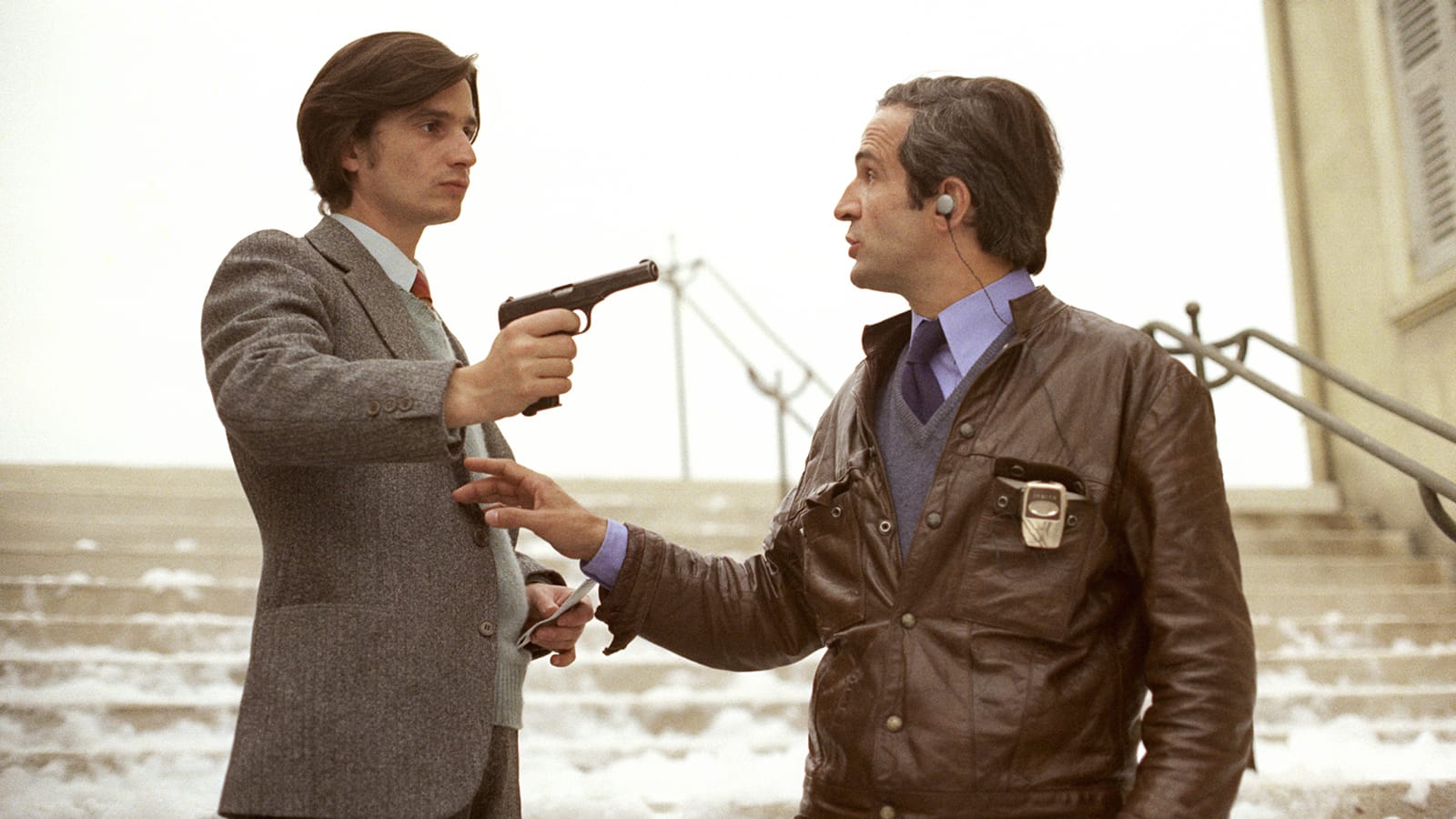
The result of Day For Night one of the most lyrical biographies of a film, with its own particularities, comparable to Fellini’s 8½ and Preston Sturges’ Sullivan’s Travels. It strives to be as personal an experience for the audience as for the artist, “…to make of each spectator of our film an observer on the set as well. An apprentice, if you will; one who will observe all that goes on for seven week’s time…” And whereas the other two films use actors, Marcello Mastroianni (8½) and Joel McCrea (Sullivan’s Travels) to pay directors, Truffaut breaks down the distinctions between art and life by playing the director himself. In fact many technicians play themselves, such as Jean-Francois Stevenin, who is the Assistant Director, Walter Bal, camera operator, Pierre Yucca, set photographer, plus many others playing their own roles. Truffaut also avoided anything that dealt with the pre-production of the film, because he felt that 8½ which deals with the psychic process by which the film is conceived, was covered thoroughly by Fellini.
Throughout Day For Night Truffaut makes many references to his previous work and that of revered directors. For example, in Truffaut’s The Soft Skin, a middle-aged writer and his young mistress make love early in the morning at a bungalow, similar to the same scene in Day For Night. At the end of the scene, the young woman sets a breakfast tray outside the door, and a cat comes to hunt for scraps of food. One may conclude that Truffaut had trouble at that time with the cat, that inspired the same sequence in Day For Night.
There are even subtle references made, such as Jean-Pierre Lèaud’s character, Alphonse. Lèaud is the father of the newborn Alphonse in Bed and Board and then plays him in Day For Night. There are many references to other directors such as Jean Vigo and Jean Renoir.
The most direct and lyrical expression of Truffaut’s loving debts occurs when Ferrand (Truffaut) opens a package of books that he has ordered. At this moment he is on the telephone with the composer George Delarue who is about to play the music for the fancy-dress sequence. The melody accompanies close-ups of the books on various film directors: Carl Dreyer, Ernst Lubitsch, Ingmar Bergman, Jean-Luc Godard, Alfred Hitchcock, Roberto Rossellini, Howard Hawks and Robert Bresson. In the dream sequence, Truffaut pays homage to Orson Welles’ Citizen Kane. As Truffaut has said, “…the film of films! Probably the one film that has stimulated more careers in movie-making than any other.”
Much of what Truffaut believes comes out in the film. He compares embarking on a new film to a stagecoach ride in the old West “…one begins by hoping for a good journey, but soon settles for just reaching one’s destination.” But through this odyssey that we are taken on, Truffaut does not seem to compromise his work. The problems of filming “Meet Pamela” are eminently practical. Although we are shown every possible practical problem, not all of them ever arise. These problems, (footage spoiled at the labs, high-strung stars, a tightening of the schedule and budget), are always removed and viewed romantically and nostalgically. As it is stated in the film, “Movies, unlike life, go along like trains in the night.” Films are easier to take then life. As Ferrand tells Alphonse, “People like us are happy only in our work, you must realize that, in our work of making movies.” For Truffaut and his cast the philosophy of film can be summed up in his one statement: “Cinema is King…”
Notes by Fred Cohen

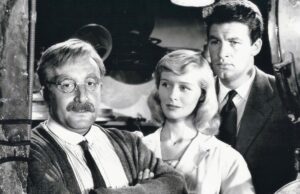
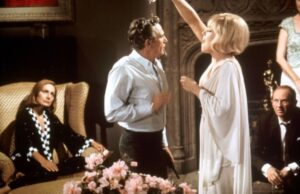
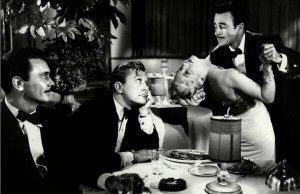






Leave a Reply